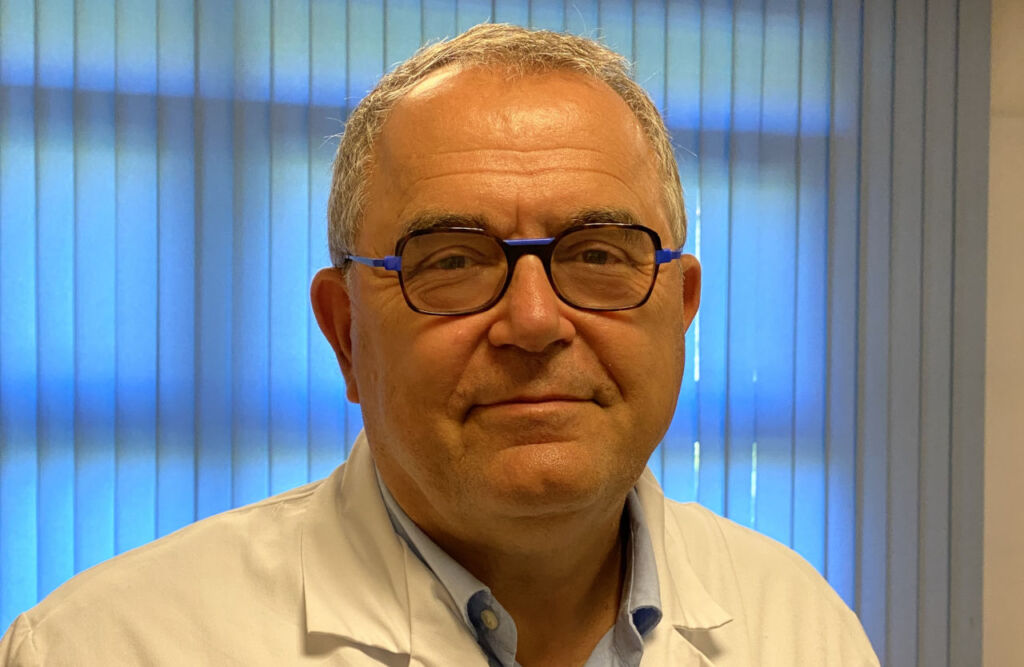[LUM#13] Fast-track research
How do we deal with a new disease? Identify the infectious agent, understand the disease, and search for an effective treatment... The emergence of COVID-19 represented a "real challenge" for Jacques Reynes*. The infectious disease specialist describes a "completely unprecedented" situation where "everything happened at breakneck speed." We meet with the head of the Infectious and Tropical Diseases Department at Montpellier University Hospital.

How do you develop a treatment when faced with a previously unknown infectious disease?
The first thing to do is identify the infectious agent. Once you know which family it belongs to, you can draw up a list of potential anti-infectives. To do this, we first look at molecules that have been used to treat similar infections. For COVID-19, an infection linked to the SARS-CoV-2 virus, this was the third time we had dealt with a highly pathogenic coronavirus, so we had data from the SARS-CoV-1 and MERS-CoV epidemics. This first step allows us to search for a treatment in an emergency, but COVID-19 is truly a new, complex disease with a highly polymorphic clinical presentation, and we had few known products that were potentially effective.
What do we do in this case?
If we don't have any known products, we move on to a repositioning strategy. This means considering a drug that is already used to treat another disease. Therapeutic molecules often have multiple cellular targets, so a molecule evaluated for a specific disease may also be effective for another. Repositioning a drug saves time: the molecule has already been evaluated in terms of toxicity and tolerance. For COVID-19, there has been an explosion of trials with repositioned products, such as hydroxychloroquine, initially used to treat malaria or certain inflammatory autoimmune diseases such as lupus or rheumatoid arthritis; lopinavir/ritonavir, used in HIV infection, and remdesivir, a broad-spectrum antiviral already tested against the Ebola virus. During the first wave of Covid-19, all patients were treated with repurposed drugs.
How do we identify the right repurposing products?
To be a good candidate, the molecule must meet several conditions. First, it must have in vitro activity against the virus—in this case, SARS-CoV-2—meaning that it inhibits the virus. But it must also be effective at a concentration that is tolerable for the infected organism. If it is only effective against the virus at a concentration that is toxic to humans, it is not a viable candidate. It must also have appropriate pharmacokinetics—this refers to how drugs behave in the body. For example, in the case of COVID-19, the virus is present in the lungs, so an antiviral must be found that reaches this organ in sufficient quantities to be effective.
And after the in vitro tests?
The molecule is evaluated in an animal model. But choosing the model is not always easy; the animal must be susceptible to the virus and develop the disease in a form that is relatively similar to that seen in humans. Remdesivir and hydroxychloroquine have been tested on rhesus macaque monkeys. Next, clinical trials in humans are launched. There are some very promising products that work very well in vitro but prove ineffective in clinical trials. This is the case, for example, with hydroxychloroquine, for which various trials have now demonstrated minimal or no efficacy, even though it was a logical repurposing product. And even once an effective candidate has been identified, the drug still needs to be able to be produced quickly at an acceptable cost. So far, six or seven antivirals have been tested.
Is inhibiting the coronavirus the main objective?
That's one of them, but it's not the only one! Covid-19 is not just a virological disease. We are therefore looking for a specific drug to combat the virus, but also drugs that are effective against the complications of this infection. For example, we are seeing severe lung damage linked to inflammation, which is the result of a cytokine storm. At this stage, patients are given corticosteroid therapy and/or cytokine inhibitors. Patients are also prone to vascular thrombosis with embolic phenomena, warranting prevention or treatment with anticoagulants. So it's not just one drug but a cocktail of drugs that needs to be administered, with precise timing! For example, corticosteroids should not be used at the onset of the disease, whereas antivirals are likely to be useful in the initial phase when viral replication is intense. Not to mention non-drug treatments: for example, in the case of COVID-19, it has been found that it is better to place patients in intensive care in the prone position, i.e., on their stomachs.
Was the entire process of developing a treatment for COVID-19 business as usual?
It wasn't the process itself that was unusual, but rather the rapid succession of steps—everything happened so quickly! There was a real change in scale compared to other epidemics; it was completely unprecedented. During the first month of the epidemic, we learned more about this disease every day! Studies were set up in record time; what usually takes 3 to 6 months was achieved in 15 days. This is the first time in my career that I have witnessed such a situation, and it is a real challenge that requires great responsiveness!
Find the dedicated radio program
Find UM podcasts now available on your favorite platform (Spotify, Deezer, Apple Podcasts, Amazon Music, etc.).
* TransVIHMI Joint Research Unit (UM, IRD, INSERM U1175, Cheikh Anta Diop University (Dakar, Senegal), Yaoundé 1 University (Cameroon))